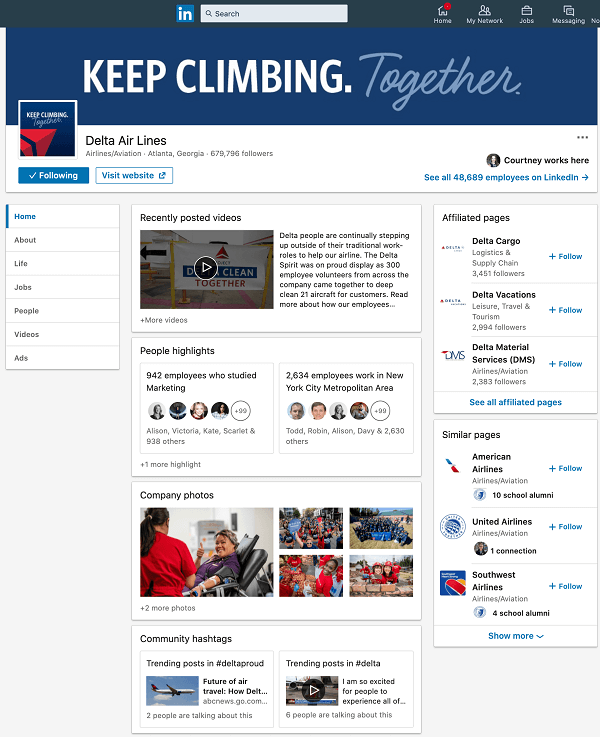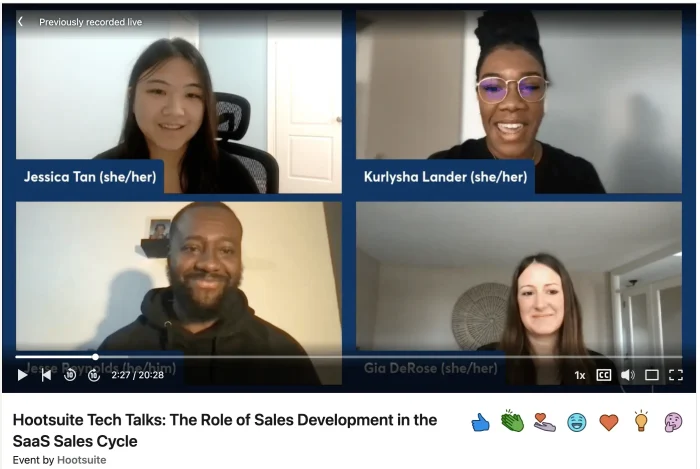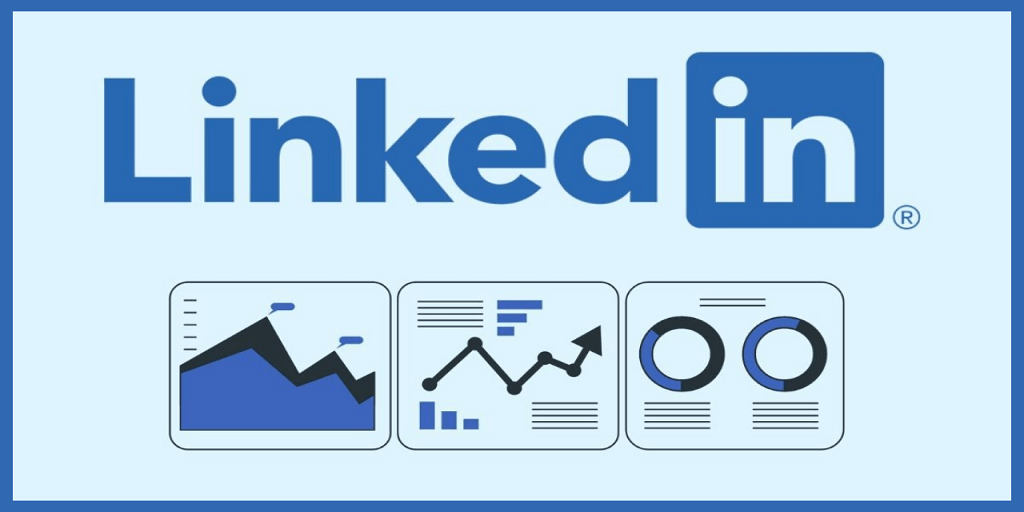LinkedIn, the world’s largest professional networking platform, offers extensive opportunities for businesses, including eCommerce enterprises, to build brand visibility, engage with a target audience, and drive meaningful connections that translate to business growth. While LinkedIn might initially seem like a space exclusive to B2B businesses, its professional network and marketing tools provide tremendous potential for eCommerce brands. This guide will explore how LinkedIn can be leveraged effectively for eCommerce, diving into the platform’s core functions, strategies for success, and the tools available to drive engagement, sales, and brand loyalty.
Understanding LinkedIn’s Unique Audience and Purpose
LinkedIn is distinct from other social media platforms due to its professional orientation. While platforms like Instagram and Facebook cater to a broader audience with a focus on casual and lifestyle content, LinkedIn’s environment is more formal, with users primarily focused on career development, industry news, and business networking. For eCommerce brands, this professional context means that LinkedIn is most effective for reaching decision-makers, industry professionals, and a potentially affluent audience.
Key Points to Consider:
- Audience Demographics: LinkedIn users generally have higher levels of education and income, making it an ideal space for brands selling premium products or services.
- Professional Focus: Users are interested in industry insights, professional development, and thought leadership, making it essential for eCommerce brands to approach LinkedIn with a focus on expertise, credibility, and professionalism.
eCommerce brands on LinkedIn can benefit from positioning themselves as industry leaders through valuable content, engaging discussions, and solutions-oriented messaging.
Setting Up an eCommerce-Friendly LinkedIn Page

A well-optimized LinkedIn page is essential for eCommerce businesses looking to make an impact. A business’s LinkedIn page acts as its professional identity, showcasing the brand, products, and values. Here’s how to effectively set up and optimize a LinkedIn page for an eCommerce brand:
Essential Components of a LinkedIn Page:
- Profile Picture and Banner: Use a high-quality logo for the profile picture, and create a custom banner that reflects your brand identity or showcases flagship products.
- Compelling About Section: Write a clear, engaging summary that tells your brand story, highlights your unique value proposition, and mentions how your products or services can help LinkedIn’s professional audience.
- Specialties and Keywords: Add relevant keywords in the “Specialties” section to improve discoverability on LinkedIn search.
- Showcase Pages: For brands with multiple products, LinkedIn allows the creation of Showcase Pages, which are extensions of the main company page, to highlight specific products or services.
By creating a well-rounded profile, your eCommerce brand becomes more recognizable and credible to LinkedIn’s professional audience.
Crafting Content that Drives Engagement

Content is the cornerstone of LinkedIn’s engagement strategy. For eCommerce brands, LinkedIn content should balance product-focused posts with value-added content, such as industry insights, case studies, and testimonials.
Types of Content to Post on LinkedIn:
- Educational Content: Share blogs, articles, and infographics that offer insights into your industry. For example, a fashion eCommerce brand could share articles on sustainability or style tips.
- Thought Leadership: LinkedIn’s audience appreciates expertise, so share your knowledge on relevant topics. Founders or C-level executives can publish articles or posts on industry trends, market challenges, and innovation.
- Behind-the-Scenes Content: Offer a peek into company culture or production processes to humanize the brand and build trust with the audience.
- Success Stories and Testimonials: Share customer stories and testimonials that demonstrate the value of your product. For B2B eCommerce brands, case studies can be particularly powerful.
- Product Highlights: Showcase your products in a way that appeals to a professional audience, emphasizing quality, innovation, or ROI.
Balancing informational content with subtle promotions keeps the audience engaged and interested in learning more about the brand.
Leveraging LinkedIn Features for eCommerce
LinkedIn’s suite of features can be harnessed by eCommerce brands to maximize visibility and reach. Here’s how to make the most of these tools:
LinkedIn Articles

Publishing long-form content directly on LinkedIn is a great way to establish authority. eCommerce brands can use LinkedIn articles to explore industry topics in-depth or share whitepapers and reports. For instance, a tech-focused eCommerce brand could publish articles on the latest trends in their niche or share research-backed content to build credibility.
LinkedIn Stories

LinkedIn Stories provide a unique opportunity for quick, engaging updates. For eCommerce brands, Stories can be used to:
- Announce product launches or special offers
- Share quick tips or product demos
- Highlight events or behind-the-scenes content
LinkedIn Live

For brands looking to create more engaging content, LinkedIn Live allows you to host live-streaming events. eCommerce brands could host Q&A sessions, product demos, or panel discussions with industry experts to build engagement.
LinkedIn Groups

By joining and engaging with LinkedIn Groups related to their industry, eCommerce brands can network with professionals, share insights, and build a community around their products.
Using these features in tandem can help eCommerce brands maximize their reach and drive meaningful interactions on LinkedIn.
LinkedIn Advertising for eCommerce Success
LinkedIn’s advertising platform, LinkedIn Ads, provides a unique and highly targeted way to reach professionals. With several ad formats and targeting options, LinkedIn Ads can be an effective tool for eCommerce brands looking to reach specific demographics, industries, or job functions.
LinkedIn Ad Formats:
- Sponsored Content: These are native ads that appear in the LinkedIn feed and are ideal for promoting blog posts, product pages, or videos.
- Sponsored InMail: InMail allows brands to send personalized messages directly to users’ LinkedIn inboxes, making it suitable for exclusive offers, event invitations, or product announcements.
- Text Ads: These simple ads appear on the sidebar and are effective for driving brand awareness or clicks to specific landing pages.
- Carousel Ads: Carousel ads enable brands to showcase multiple products or messages in a single ad, ideal for eCommerce brands with a diverse product range.
Targeting Options
LinkedIn’s advanced targeting allows brands to specify their audience based on criteria such as industry, job title, company size, and even skills. This level of precision can ensure that your ads reach potential customers who are more likely to convert.
Running a mix of different ad formats can help your eCommerce brand reach a broad but highly targeted audience on LinkedIn.
Building Connections and Networking on LinkedIn
Building a network on LinkedIn is essential for eCommerce brands aiming to increase visibility and credibility. LinkedIn’s networking tools allow brands to connect directly with key figures in their industry, from suppliers to potential partners.
Effective Networking Strategies:
- Connecting with Influencers and Thought Leaders: Identify and connect with professionals and influencers in your industry to broaden your network and gain visibility.
- Engaging with Followers and Connections: Regularly comment on, like, and share relevant posts from your connections. This engagement boosts your profile visibility and demonstrates your interest in the industry.
- Participating in LinkedIn Groups: By participating in industry-specific groups, you can position your brand as a thought leader and create connections with like-minded professionals.
- Personalized Outreach: Reach out to potential partners, suppliers, and collaborators with personalized messages that demonstrate a clear understanding of their business.
By networking strategically, eCommerce brands can foster partnerships and reach new customer bases.
Analyzing and Measuring Performance on LinkedIn
To ensure your LinkedIn strategy is effective, it’s essential to track key performance metrics. LinkedIn provides several analytics tools that can help eCommerce brands evaluate their reach, engagement, and conversion rates.
Key LinkedIn Metrics to Track:
- Engagement Rate: Track the number of likes, comments, and shares your posts receive. High engagement rates indicate that your content resonates with the audience.
- Follower Growth: Monitor follower growth over time to measure brand awareness and identify successful campaigns.
- Click-Through Rate (CTR): For ads and posts with links, CTR indicates the effectiveness of your call-to-action and overall engagement.
- Lead Generation: LinkedIn Lead Gen Forms allow you to collect leads directly from LinkedIn. Tracking the number of leads generated can help measure the success of your campaigns.
Using these metrics, eCommerce brands can continuously refine their LinkedIn strategy to maximize impact and ROI.
Conclusion
LinkedIn offers a wealth of opportunities for eCommerce brands to build credibility, connect with professionals, and drive business growth. While it may not be the primary platform for direct consumer sales, LinkedIn provides a unique environment for brand-building, networking, and B2B growth. By optimizing a LinkedIn page, creating compelling content, leveraging advertising, and networking strategically, eCommerce brands can tap into LinkedIn’s professional audience to expand their reach and drive conversions.
With a consistent, value-driven approach to LinkedIn, eCommerce brands can create a robust online presence that resonates with a professional audience and ultimately contributes to long-term business success.
Read Also
- Does Discord Count as a Reload in Destiny 2?
- How To Fix SKYUI Error Code 1
- 13 Best Free TVShows88 Alternatives 2024
- 10 Best Free Sockshare Alternatives
